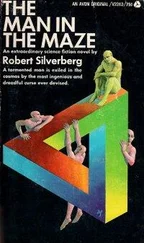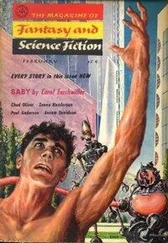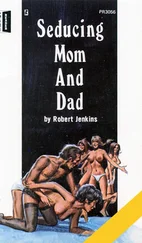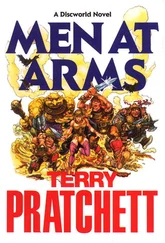Robert Leckie - Strong Men Armed
Здесь есть возможность читать онлайн «Robert Leckie - Strong Men Armed» весь текст электронной книги совершенно бесплатно (целиком полную версию без сокращений). В некоторых случаях можно слушать аудио, скачать через торрент в формате fb2 и присутствует краткое содержание. Город: Cambridge, Год выпуска: 2010, ISBN: 2010, Издательство: Da Capo Press, Жанр: nonf_military, на английском языке. Описание произведения, (предисловие) а так же отзывы посетителей доступны на портале библиотеки ЛибКат.
- Название:Strong Men Armed
- Автор:
- Издательство:Da Capo Press
- Жанр:
- Год:2010
- Город:Cambridge
- ISBN:978-0-786-74832-7
- Рейтинг книги:3 / 5. Голосов: 1
-
Избранное:Добавить в избранное
- Отзывы:
-
Ваша оценка:
- 60
- 1
- 2
- 3
- 4
- 5
Strong Men Armed: краткое содержание, описание и аннотация
Предлагаем к чтению аннотацию, описание, краткое содержание или предисловие (зависит от того, что написал сам автор книги «Strong Men Armed»). Если вы не нашли необходимую информацию о книге — напишите в комментариях, мы постараемся отыскать её.
Strong Men Armed — читать онлайн бесплатно полную книгу (весь текст) целиком
Ниже представлен текст книги, разбитый по страницам. Система сохранения места последней прочитанной страницы, позволяет с удобством читать онлайн бесплатно книгу «Strong Men Armed», без необходимости каждый раз заново искать на чём Вы остановились. Поставьте закладку, и сможете в любой момент перейти на страницу, на которой закончили чтение.
Интервал:
Закладка:
Five more days and Japan surrendered.
Sixteen more days, the thirtieth of August, and transports were sliding through the dawn mists into Tokyo Bay. They carried men of the Second Battalion, Fourth Marine Regiment. The ships anchored off Futtsu Point, where massive stone forts flew white flags of surrender. For the last time came the order:
“Land the landing force.”
For the last time came the roaring run inshore, the salt sea spray in the face, the firmer hold on rifle slings; for the last time the grinding of steel keels on beaches, the lurching halt, the banging fall of the ramp and the buckskin-shod feet pelting through surf and sand.
For the first time, Nippon had been invaded. The men in green were forming orderly ranks on Japanese soil and marching on the silent forts to receive the surrendered arms of Japanese soldiers.
The long charge was over and there would be no more epitaphs.
BIBLIOGRAPHICAL NOTE
Because this book has been written in a narrative style which might have been defeated by the use of footnotes, I have chosen to explain what needs to be explained, as well as to list a selected bibliography, in this Note.
To begin, all the persons herein are real and their names are real. Middle initials have been dropped because I find letters more ambiguous than numerals and have used only those which have significance, such as the M which explains how Holland M. Smith came to be called Howlin’ Mad or the P which gave Colonel Oliver P. Smith his nickname of “O.P.” General Roy Geiger’s middle initial S, however, has even less meaning than, say, the number 3—and it will be remembered that George Washington, Julius Caesar and Napoleon Bonaparte, to name a few generals, did not use middle initials.
The ranks mentioned here are those held at the time and all distances are given in statute miles, usually rounded off to the nearest zero or hundred to avoid an impression of exactness. Casualties—always very difficult to determine with accuracy —are normally those given in the excellent battle monographs published by the Marine Corps Historical Branch. When these books failed to list casualties for a particular action, I have fallen back on the equally fine histories prepared by the Army’s Office of the Chief of Military History. Almost all the accounts of naval battles, together with ship and naval aircraft losses, are based on the nine volumes of Samuel Eliot Morison’s History of U.S. Naval Operations in World War II which deal with the Pacific War.
Generally these three sources—the Marine monographs, the Army histories (written, incidentally, by civilian historians), and the Morison volumes—provide the bones of military history on which I have attempted to lay the flesh of men speaking and acting. All three have also been rich in quotations from captured Japanese diaries or battle orders, and I must say frankly that Strong Men Armed could not have been written if these works had not all been published by 1960. Before then, without a research staff of my own, I would have been bogged down in literal tons of classified documents at the various headquarters around Washington and Arlington.
Japanese sources were works such as Kogun, the Japanese Army in the Pacific War, by Saburo Hayashi with Alvin D. Coox, my authority for the statement that Japanese staff officers struck each other in the quarrel over Guadalcanal or that the Japanese originally expected to have to fight the British more than the Americans; the two volumes of U.S. Strategic Bombing Survey, Interrogations of Japanese O fficials, a work abounding in background information concerning Japan during the war and also surprisingly productive of “human interest” material; or The Divine Wind, by Rikihei Inoguchi and Tadashi Nakajima, with Roger Pineau, which explains much of the philosophy of the kamikaze.
Fletcher Pratt’s The Marines’ War and The Island War by Frank O. Hough, both outline works on the Marines in the Pacific, helped chart a course for the author, while The U.S. Marines and Amphibious War, by Jeter A. Isely and Philip A. Crowl, was the source of much information on logistics or the technical aspects of the Pacific. For facts and figures on Marines in the air I have quarried Robert Sherrod’s exhaustive History of Marine Corps Aviation in World War II, and have gone to John A. DeChant’s Devilbirds for accounts of individual flying feats or for ballads such as those sung at the Hotel de Gink.
Other sources were division histories, memoirs, personal-experience narratives, maps, pictures, citations, on-the-spot books of the civilian war correspondents, war anthologies, magazine articles—from news and general magazines as well as from professional periodicals such as Marine Corps Gazette, Leatherneck, Infantry Journal or U.S. Naval Institute Proceedings-verifiable newspaper clippings and Marine combat correspondents’ reports, as well as my own experiences as a scout and machine-gunner with the First Marine Division in all that outfit’s campaigns but Okinawa.
I have drawn on this last, and also on numerous interviews with famous Marines while gathering material for other books and articles, in telling such stories as that of the tongue-tied Marine who could not pronounce the password on Guadalcanal, or of Chesty Puller booting a reluctant rifleman into action. In the first incident, the author was the sentry who demanded the password, while the second comes from a conversation with Lieutenant General Puller one wintry afternoon in Saluda, Virginia.
Also, I have frequently quoted men in the midst of battle, to name a typical few: Colonel David Shoup on Tarawa, an unidentified sergeant under Peleliu’s Bloody Nose Ridge, Captain William Shoemaker on Guam, Sergeant Phil Mottola on New Britain, or Red Mike Edson at Guadalcanal. These remarks came, respectively, from Robert Sherrod’s Tarawa, Russell Davis’ Marine at War, Alvin M. Josephy’s The Long and the Short and the Tall, a story filed by Sergeant Hans R. Johansen, and The Old Breed, George McMillan’s History of the First Marine Division. Mr. McMillan’s book, incidentally, along with the late Major Hough’s monograph, The Assault on Peleliu, insists that there were no snipers riding the Japanese tanks annihilated in the D-Day attack at Peleliu. I have said there were, because I saw them and shot at them, as did many of my comrades. Major Hough’s authority was my own battalion commander, who was quite properly some distance behind the battle, whereas Mr. McMillan’s is a tank colonel who went over the battlefield after the fight was over. Certainly there were no snipers on the tanks by then; they’d been shot off or pulled down from their slings of camouflage netting.
I cite this discrepancy between myself and two authors whom I respect only by way of indicating that I have usually preferred the account of a man who has been in the battle to that of another who has not, even if that other person happens to be the commander of the unit involved. It is the man who is on the spot who makes judgments that must be exact, if only because he risks his life on them. A Marine sees a bulky object on the back of a speeding tank and he must judge whether it is an enemy soldier or merely, say, a roll of camouflage cloth. If it’s a soldier then the Marine runs the risk of being shot before he can attack the tank, and so he must shoot the soldier first. If it is only cloth, then the Marine can throw his grenade right away. Marines who make bad judgments at such times rarely survive to confuse writers.
On the other hand, I have been wary of those inflated “I-was-there” accounts which proliferated in the press during the war. Stories which suggest that the hair on the chest of the typical Marine grew to a ferocious twelve-inch length have had no part in this book, nor have I trusted those accounts which overestimate a single man’s actions. Often the most gallant deeds turn out to be futile, or nearly so, if all results are to be measured in victory or defeat. But gallantry or valor—to this writer’s mind—are beyond such yardsticks. Because of this, and because valor and gallantry have been so frequently belittled in the reaction of the postwar era, I have named every one of the Marine Medal of Honor winners and paid particular attention to those who consciously and deliberately sacrificed their lives to save others. The French writer Albert Camus says “heroism is not much, happiness is more difficult,” and tells us in The Fall that modern man is incapable of forgetting himself for even a few seconds; the book and motion picture They Came to Cordura shows Medal of Honor winners as connivers of base motivations who are not nearly so noble as their major who hid in a ditch during battle; and Pappy Boyington, a Medal of Honor winner himself, concludes his Baa Baa Black Sheep with the remark: “Just name a hero and I’ll prove he’s a bum.” These three, and many others, are answered by the dozens of Marines who fell on enemy grenades to save the lives of their buddies. This is heroism, which is something more than natural courage, though it is often confused with it.
Читать дальшеИнтервал:
Закладка:
Похожие книги на «Strong Men Armed»
Представляем Вашему вниманию похожие книги на «Strong Men Armed» списком для выбора. Мы отобрали схожую по названию и смыслу литературу в надежде предоставить читателям больше вариантов отыскать новые, интересные, ещё непрочитанные произведения.
Обсуждение, отзывы о книге «Strong Men Armed» и просто собственные мнения читателей. Оставьте ваши комментарии, напишите, что Вы думаете о произведении, его смысле или главных героях. Укажите что конкретно понравилось, а что нет, и почему Вы так считаете.












